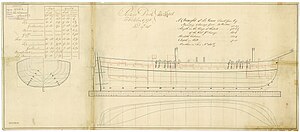궁수자리 엡실론
Epsilon Sagittarii| 관측 데이터 에포크 J2000 이쿼녹스 J2000 | |
|---|---|
| 별자리 | 궁수자리 |
| 적경 | 18h 24m 10.31840s[1] |
| 적위 | –34° 23' 04.6193°[1] |
| 겉보기 등급(V) | +1.85[2] |
| 특성. | |
| 스펙트럼형 | B9.5 III[3] |
| U-B 색지수 | +0.13[2] |
| B-V 색지수 | –0.03[2] |
| 측성학 | |
| 반지름 속도(Rv) | –15km[4]/s |
| 고유운동(μ) | RA: –39.42mas[1]/년 Dec.: –124.20mas[1]/년 |
| 시차(ppm) | 22.76 ± 0.24 mas[1] |
| 거리 | 143 ± 2 리 (43.9 ± 0.5pc) |
| 절대 등급(MV) | –1.41[5] |
| 세부 사항 | |
| ◦ Sgr A | |
| 덩어리 | 3.515 ± 0.138[5] M☉ |
| 반지름 | 6.8[6] R☉ |
| 광도 | 363[5] L☉ |
| 표면 중력(log g) | 4.50[7] cgs |
| 온도 | 9,960[8] K |
| 회전 속도(vsini) | 236km[9]/s |
| 나이 | 232[5] Myr |
| ◦ Sgr B | |
| 덩어리 | 0.95[5] M☉ |
| 광도 | 0.89[5] L☉ |
| 온도 | 5,807K[5] |
| 기타 명칭 | |
| 데이터베이스 참조 | |
| SIMBAD | 데이터. |
궁수자리 엡실론(ε Sgr, 약칭 엡실론 Sgr, 엡실론 Sgr)[10][11]은 궁수자리에 있는 쌍성계이다.겉보기 등급은 +1.85로[2] 궁수자리에서 가장 밝은 천체입니다.시차 측정에 따르면 이 별은 태양에서 약 143광년(44 파섹) 떨어져 있습니다.
관찰
궁수자리 엡실론은 여름 별자리(남반구의 겨울)이기 때문에 6월과 7월에 가장 잘 볼 수 있습니다.이 별은 황도에서 최소 10도 떨어져 있으며, 태양은 12월 25일에서 26일경에 황도 상공을 통과합니다.이 별은 북반구 중위도에서 1월 말에서 11월 말까지 볼 수 있습니다.남반구 중위도에서 이 별은 1월 초부터 12월 중순까지 볼 수 있습니다.이 별은 북위 55° 이상의 지역에서는 보이지 않습니다.궁수자리 엡실론은 55°S 이하의 위도에서 볼 때 극주위를 도는 항성입니다.
항성계
이 쌍성계의 주성 궁수자리 γ A의 분광형은 B9.[3]5 III이며, 광도분류 III는 중심핵에서 수소의 공급을 모두 소진한 진화한 거성임을 시사합니다.간섭계로 측정한 이 별의 각지름은 사지의 어두워짐을 보정한 후 1.44 ± 0.06 [12]밀리초각이며, 이는 추정 거리에서 물리적 반지름이 태양 [6]반지름의 약 6.8 배에 해당합니다.이것은 경험적으로 결정된 값인 6.[13]9 태양 반지름과 거의 일치합니다.이 행성의 질량은 태양의 약 3.5배이며 유효 온도는 9,[5]960 켈빈으로 외부 대기로부터 태양 광도의 약 363배를 복사하고 있습니다.이 열기에서, 그 별은 청백색으로 [14]빛납니다.
이 별은 236 킬로미터의−1 [9]자전 속도로 빠르게 회전하고 있습니다.강도는 10.5~130.5[15] Gauss 범위의 자기장을 가지고 있으며 광도는30 약 10 Erg의−1 [5]X선 소스입니다.이 시스템은 적외선 복사의 과도한 방출을 보여주는데, 이는 먼지 원반의 존재를 암시합니다.이 원반의 온도를 기준으로 [16]주성으로부터 평균 155 AU 떨어져 공전하고 있습니다.
2001년 기준으로 두 번째 별 궁수자리 γ B는 주성으로부터 142.3°의 위치각을 따라 2.392 초각 떨어져 있습니다.이 각도는 이 시스템의 거리에서 약 106AU의 물리적 분리와 동일하며, 파편 디스크 내부에 배치됩니다.이 별은 태양 질량의 약 95%를 차지하는 주계열성입니다.이 시스템은 태양으로부터의 거리에 대해 예상보다 높은 광학 선형 편광을 가지고 있습니다. 이는 보조 [17]디스크에서 산란된 빛 때문입니다.1993년 적응광학 코로나그래프를 사용하여 식별하기 전에, 이 동반성은 주성에 [18]기인한 스펙트럼 이상에 책임이 있었을 수 있습니다.32.[5]3 초각의 각거리에 후보 항성 동반성이 있습니다.
명명법
◦ 궁수자리 엡실론은 항성계의 바이어 명명법입니다.
그것은 전통적인 이름인 카우스 오스트랄리스를 가지고 있었는데, 이는 아랍어 وسق qaws 'bow'와 라틴어 australis 'southern'에서 유래되었습니다.2016년, 국제천문연맹은 별의 고유명칭을 목록화하고 표준화하기 위해 항성명칭 워킹그룹(WGSN)[19]을 조직했습니다.2016년 7월[20] WGSN의 첫 회보에는 궁수자리 ε A에 대한 카우스 오스트랄리스를 포함한 WGSN이 승인한 처음 두 개의 이름 배치의 표가 포함되어 있습니다.
Al Achsasi al Mouakket 달력에 있는 별 목록에서 이 별은 Thalath al Waridah 또는 'Warida의 3분의 1'[21]을 의미하는 Thalith al Waridah로 지정되었습니다.
중국어에서, 箕 (Jī)는, 위노잉 바스켓을 의미하며, 엡실론 궁수자리, 감마 궁수자리, 델타 궁수자리, 그리고 궁수자리 에타로 구성된 별자리를 말합니다.따라서, 엡실론 궁수자리의 중국어 이름 자체는 箕宿三(영어: Jù Sīan: Winnowing Basket의 세 번째 별)입니다.[22]
이 별은 다음과 함께:
- 감마 궁수자리, 델타 궁수자리, 제타 궁수자리, 람다 궁수자리, 시그마 궁수자리, 타우 궁수자리, 피 궁수자리는 티포타성을 [23]구성합니다.
- Gamma Sagittarii, Delta Sagittarii and Eta Sagittarii were Al Naʽām al Wārid (النعم الوارد), the 'Going Ostriches'.[24]
- 궁수자리 감마와 궁수자리 델타는 아카디아어로 '제비'[24]라고 불리는 신눈투(Sin-nun-tu) 또는 시누-누-툼(Si-nu-nu-tum)이었습니다.
Kaus Australis는 바빌로니아어 해설서 MUL에 등재되어 있습니다.MA로서의 PIN.GUR, "껍질"[25]을 의미합니다8.
브라질 마투그로수 주의 칼라팔로 사람들은 이 별을 '전갈자리', [26]'전갈자리', '전갈자리', '전갈자리', '전갈자리', '전갈자리', '전갈자리'를 통해 '전갈자리'라고 불렀습니다.
레퍼런스
- ^ a b c d e van Leeuwen, F. (November 2007), "Validation of the new Hipparcos reduction", Astronomy and Astrophysics, 474 (2): 653–664, arXiv:0708.1752, Bibcode:2007A&A...474..653V, doi:10.1051/0004-6361:20078357, S2CID 18759600
- ^ a b c d Johnson, H. L.; et al. (1966), "UBVRIJKL photometry of the bright stars", Communications of the Lunar and Planetary Laboratory, 4: 99–100, Bibcode:1966CoLPL...4...99J
- ^ a b Houk, Nancy; Smith-Moore, M. (1979), "Michigan catalogue of two-dimensional spectral types for the HD stars", Michigan Catalogue of Two-dimensional Spectral Types for the HD Stars. Volume_3. Declinations -40.0° to -26.0°, Ann Arbor, Michigan: Dept. of Astronomy, University of Michigan, 3, Bibcode:1982mcts.book.....H
- ^ Evans, D. S. (June 20–24, 1966). "The Revision of the General Catalogue of Radial Velocities". In Batten, Alan Henry; Heard, John Frederick (eds.). Determination of Radial Velocities and their Applications, Proceedings from IAU Symposium no. 30. Determination of Radial Velocities and Their Applications. Vol. 30. University of Toronto: International Astronomical Union. p. 57. Bibcode:1967IAUS...30...57E.
- ^ a b c d e f g h i j Hubrig, S.; Le Mignant, D.; North, P.; Krautter, J. (June 2001), "Search for low-mass PMS companions around X-ray selected late B stars", Astronomy and Astrophysics, 372: 152–164, arXiv:astro-ph/0103201, Bibcode:2001A&A...372..152H, doi:10.1051/0004-6361:20010452, S2CID 17507782
- ^ a b 반지름(R*)은 다음과 Lang, Kenneth R. (2006), Astrophysical formulae, Astronomy and astrophysics library, vol. 1 (3rd ed.), Birkhäuser, ISBN 3-540-29692-1같습니다.
- ^ Adelman, Saul J. (December 2004). "The physical properties of normal A stars". In Zverko, J.; Ziznovsky, J.; Adelman, S. J.; Weiss, W. W. (eds.). The A-Star Puzzle, held in Poprad, Slovakia, July 8-13, 2004. IAU Symposium. Vol. 2004, no. 224. Cambridge, UK: Cambridge University Press. pp. 1–11. Bibcode:2004IAUS..224....1A. doi:10.1017/S1743921304004314.
- ^ Zorec, J.; et al. (July 2009), "Fundamental parameters of B supergiants from the BCD system. I. Calibration of the (λ_1, D) parameters into Teff", Astronomy and Astrophysics, 501 (1): 297–320, arXiv:0903.5134, Bibcode:2009A&A...501..297Z, doi:10.1051/0004-6361/200811147, S2CID 14969137
- ^ a b Royer, F.; et al. (October 2002), "Rotational velocities of A-type stars in the northern hemisphere. II. Measurement of v sin i", Astronomy and Astrophysics, 393 (3): 897–911, arXiv:astro-ph/0205255, Bibcode:2002A&A...393..897R, doi:10.1051/0004-6361:20020943, S2CID 14070763
- ^ Kunitzsch, Paul; Smart, Tim (2006). A Dictionary of Modern star Names: A Short Guide to 254 Star Names and Their Derivations (2nd rev. ed.). Cambridge, Massachusetts: Sky Pub. ISBN 978-1-931559-44-7.
- ^ "IAU Catalog of Star Names". Retrieved 28 July 2016.
- ^ Richichi, A.; Percheron, I.; Khristoforova, M. (February 2005), "CHARM2: An updated Catalog of High Angular Resolution Measurements", Astronomy and Astrophysics, 431 (2): 773–777, Bibcode:2005A&A...431..773R, doi:10.1051/0004-6361:20042039
- ^ Jerzykiewicz, M.; Molenda-Zakowicz, J. (September 2000), "Empirical Luminosities and Radii of Early-Type Stars after Hipparcos", Acta Astronomica, 50: 369–380, Bibcode:2000AcA....50..369J
- ^ "The Colour of Stars", Australia Telescope, Outreach and Education, Commonwealth Scientific and Industrial Research Organisation, December 21, 2004, archived from the original on 2012-03-18, retrieved 2012-01-16
- ^ Bychkov, V. D.; Bychkova, L. V.; Madej, J. (August 2003), "Catalogue of averaged stellar effective magnetic fields. I. Chemically peculiar A and B type stars", Astronomy and Astrophysics, 407 (2): 631–642, arXiv:astro-ph/0307356, Bibcode:2003A&A...407..631B, doi:10.1051/0004-6361:20030741, S2CID 14184105
- ^ Rodriguez, David R.; Zuckerman, B. (February 2012), "Binaries among Debris Disk Stars", The Astrophysical Journal, 745 (2): 147, arXiv:1111.5618, Bibcode:2012ApJ...745..147R, doi:10.1088/0004-637X/745/2/147, S2CID 73681879
- ^ Cotton, D. V.; et al. (January 2016). "The linear polarization of Southern bright stars measured at the parts-per-million level". Monthly Notices of the Royal Astronomical Society. 455 (2): 1607–1628. arXiv:1509.07221. Bibcode:2016MNRAS.455.1607C. doi:10.1093/mnras/stv2185. S2CID 11191040.
- ^ Golimowski, David A.; Durrance, Samuel T.; Clampin, Mark (March 1993), "Detection of an apparent star 2.1 arcsec from the circumstellar disk candidate Epsilon Sagittarii", Astronomical Journal, 105 (3): 1108–1113, Bibcode:1993AJ....105.1108G, doi:10.1086/116498
- ^ "IAU Working Group on Star Names (WGSN)". Retrieved 22 May 2016.
- ^ "Bulletin of the IAU Working Group on Star Names, No. 1" (PDF). Retrieved 28 July 2016.
- ^ Knobel, E. B. (June 1895). "Al Achsasi Al Mouakket, on a catalogue of stars in the Calendarium of Mohammad Al Achsasi Al Mouakket". Monthly Notices of the Royal Astronomical Society. 55 (8): 435. Bibcode:1895MNRAS..55..429K. doi:10.1093/mnras/55.8.429.
- ^ (중국어) AEEA (천문학 전시 및 교육 활동) 2006년 5월 11일
- ^ "Teapot". constellation-guide.com. Retrieved 2017-05-13.
- ^ a b Allen, R. H. (1963). Star Names: Their Lore and Meaning (Reprint ed.). New York: Dover Publications Inc. p. 355. ISBN 0-486-21079-0. Retrieved 2012-09-04.
- ^ Rogers, J. H. (February 1998), "Origins of the ancient constellations: I. The Mesopotamian traditions", Journal of the British Astronomical Association, 108 (1): 9–28, Bibcode:1998JBAA..108....9R
- ^ Basso, Ellen B. (1987). In Favor of Deceit: A Study of Tricksters in an Amazonian Society. Tucson, Arizona: University of Arizona Press. p. 360. ISBN 0-8165-1022-9.




